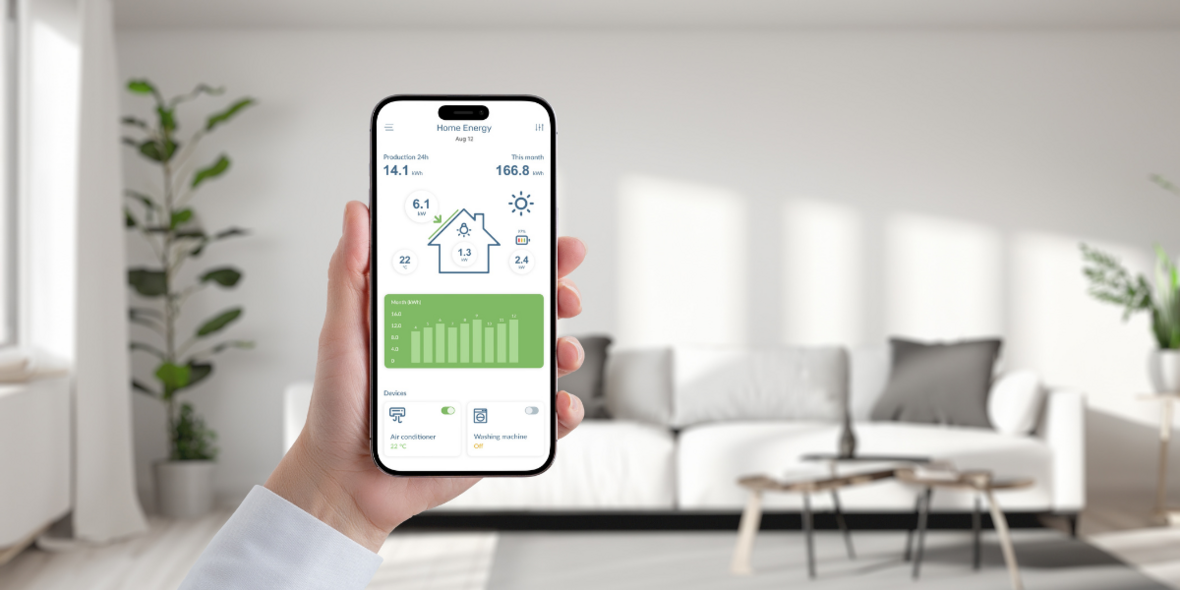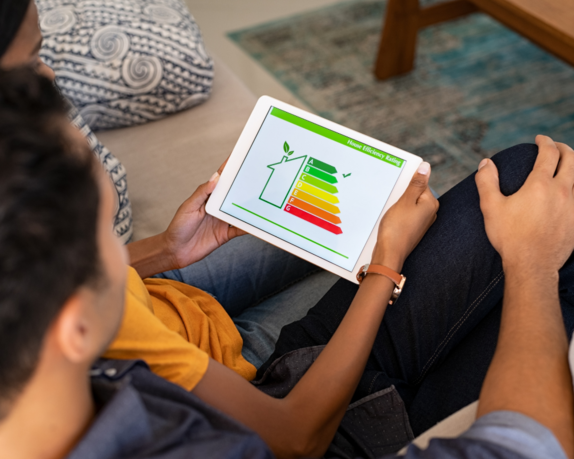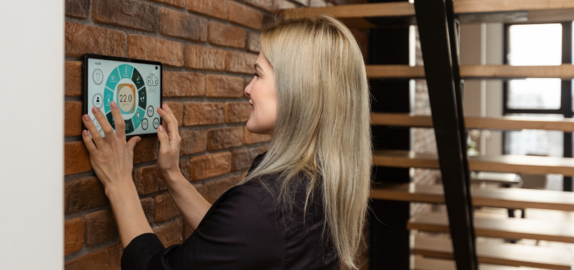21. Mar 2024
Reducing your carbon footprint with smart home solutions

With rising concerns about climate change, it’s important that we make our habits and way of living more sustainable. As a homeowner you can also contribute to a greener future. Insulating your home thoroughly and opting for durable energy sources have a big impact on your household’s carbon footprint, but did you know that the way of using energy can increase that positive effect? By integrating smart technology into your home, you’re empowered to monitor your energy consumption and adjust your usage for the better.
The carbon footprint of a home explained
Whether you’re doing the laundry, taking a shower, cooking dinner or turning up the heat, all of these actions (and many other) contribute to your household’s carbon footprint. Due to small and bigger shortcomings in a home’s infrastructure (like poor insulation, a water leak or sleeper devices) and plain forgetfulness (Who hasn’t forgotten to turn off the light upon leaving the house?), people are not always aware of their consumption. This leads not only to a larger carbon footprint, but also to additional, unnecessary costs.
A report by the UNEP showed an average household in the EU produces 7.2 tons of CO₂. In other words, homeowners need and can make a real difference, but where to start?
How a smart home system reduces your household’s emission

“Knowledge is power”, and that’s exactly what an integrated smart home system has to offer homeowners looking for a more sustainable lifestyle. Being on top of your daily energy usage and being aware of energy-heavy patterns is a first step towards active behavioral change. By pairing monitoring devices and regular smart home devices in a KNX integrated system, you’ll be able to check real-time data and status of your devices at any time.
For instance, you’re not sure if you turned off the A/C. Just simply check your home’s energy usage remotely and switch off any unnecessary active devices.
Besides that, you can also analyze trends in your energy consumption, allowing you to implement changes to your high consumers and ultimately optimize your energy efficiency long-term.
3 everyday-use, smart devices that help you reduce your carbon footprint
There are several smart devices that empower homeowners to choose for a smarter and more sustainable house. Here are a few listed.
1. Smart push buttons
Smart push buttons allow you to switch multiple smart devices in a room on and off with one single touch. This ensures that you don’t have to check each system, like lights, heating or AV equipment, individually. Energy-efficient and time-saving!
2. Smart thermostats
With a smart thermostat you can regulate and automate your home’s temperature, even if you are away. The smart thermostat auto regulates the room temperature by adjusting it when a sudden drop or increase occurs. While you’re out, you can choose an automated program to use less heating or cooling and save more energy, until you are back home.
3. Smart control panels

Smart control panels have the same benefits and functions as smart push buttons, but cover your entire house (system) on a single screen panel, instead of a single room.
By implementing energy-regulating devices, like smart meters, and everyday-use smart devices, such as lighting, blind controls and HVAC products, you can make well-considered changes to the settings of your complete smart system from one place.
Conclusion
Smart homes have proven their convenience purpose already, but in the cause for a more sustainable future they also have a lot of potential. It may seem like a large investment at first, but the impact on a personal and global level is undeniable. To ensure that your smart system is properly installed and reflects your durable lifestyle, make sure to contact a KNX-certified installer.
Highlights
-
 News
NewsYou can now apply for the KNX Awards 2024!
The KNX Awards is a long-standing competition that puts the smartest KNX home and building projects in the picture. Hand in ... -
 News
NewsThe KNX Journal 2024 is now available
The latest edition of our annual smart home and building solutions magazine has arrived. The KNX Journal 2024 offers ... -
 News
NewsBoost your business with the KNX Toolkit for Professionals
Are you a professional looking to bring your KNX business to the next level? KNX Association has just the thing for you – ...
